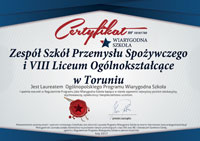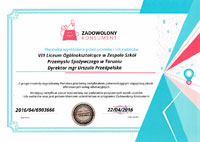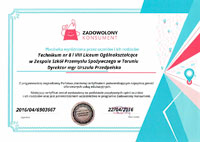Polish is a member of the West Slavic group of the Slavic subfamily of the Indo-European family of languages. Polish is spoken as first language by about 38 million people in Poland, where it is the official language; by more than 1 million in other countries of Eastern Europe; and by about 1 million in North America. The Polish language is written in the Roman alphabet. It is extremely rich phonetically, having 10 vowels and 35 consonants. In pronunciation, stress is normally placed on the penultimate syllable of a word. A distinctive feature is the preservation in spoken Polish of nasal vowels which are no longer found in other modern Slavic tongues. Nouns, pronouns, and adjectives have seven cases (nominative, genitive, dative, accusative, vocative, instrumental, and locative). The verb is inflected to indicate gender as well as person and number, and can do so without the use of personal pronouns. There are three genders (masculine, feminine, and neuter) and two numbers (singular and plural). A large number of diminutive and augmentative forms is also characteristic. Vocabulary of Polish is basically Slavic, but it has been enriched by borrowings from German in the Middle Ages, from Italian during the Renaissance, from French in the 17th and 18th cent., and also from English, White Russian, and Ukrainian.
Brief vocabulary
| Personal pronouns | |
| Singular | Plural |
| ja - I ty - you on - he ona -she ono - it |
my - wy wy - you oni - they (group of people, including at least one male) one - they (group of female persons or group not involving persons) |
Numbers |
|
| jeden - one dwa - two trzy - three cztery - four pięć - five sześć - six siedem - seven osiem - eight dziewięć - nine dziesięć - ten jedenaście - eleven dwanaście - twelve trzynaście - thirteen czternaście - fourteen piętnaście - fifteen szesnaście - sixteen |
siedemnaście - seventeen osiemnaście - eighteen dziewiętnaście - nineteen dwadzieścia - twenty trzydzieści - thirty czterdzieści - forty pięćdziesiąt - fifty sześćdziesiąt - sixty siedemdziesiąt - seventy osiemdziesiąt - eighty dziewięćdziesiąt - ninety sto - one hundred pięćset - five hundred tysiąc - one thousand milion - one million miliard - one billion |
|
|
||||||||||||||||||||||||||||||||||||||||||||||||||||||||||||||||||||||||||||||||||||||||||||||||||||||||||||||||||||||||||||
The Republic of Poland is identified by a great many symbols, but three of them are of greatest importance and are commonly recognized on the international arena. They include:
- The emblem of the Republic of Poland (White Eagle)
- The Polish national flag (national colours are white and red)
- The Polish national anthem (Dąbrowski’s Mazurka)
The Emblem of Poland

The coins issued by the first king of Poland, Bolesław Chrobry (died 1025), are known to have born the image of an eagle which ever since has undergone a good number of transfigurations. The emblem of the Polish-Lithuanian Commonwealth also depicted an eagle. At the time of the rule of the last king of Poland, Stanisław August Poniatowski (died 1798), the eagle was holding a sceptre. The post-war communist government deprived the eagle of the crown. After democratic rule was reinstated in 1989, the eagle got the crown back and today it looks as pictured above in keeping with the provisions included in the Journal of Laws. The eagle is shown in the ready-to-fight position. One has to add that the Polish Army possesses its own versions of the emblem, each one characteristic of the Land Forces, Navy, and the Air Force.
The Flag of Poland

Originally, the Polish national colour used to be scarlet, regarded as the most noble of all colours. It was used as the symbol of dignity and affluence. Owing to the price of the dye necessary for obtaining the colour there were very few people who could afford it so the colour was worn by the richest gentry and state dignitaries.
White and red were first declared Polish national colours on the 3rd of May 1792. During the celebrations of the first anniversary of the approval of the first Polish constitution women were wearing white dresses and red sashes. Men were wearing white and red sashes. The colours referred to the emblem of the Polish Kingdom – white eagle shown against a red coat of arms.
According to the 1980 Emblem, National Colours and National Anthem Act as well as the State Seals Act, the Polish flag is a rectangular, red and white piece of fabric hoisted up a flagpole. According to the Article 6 Section 2 of the Act, a version with the emblem of Poland placed in the middle of the white stripe is also regarded as the flag of Poland. When the flag is hanging vertically the red stripe ought to be on the right-hand side and the white stripe ought to be placed on the left-hand side.
The National Anthem of Poland
Since February 26, 1927 Dąbrowski’s Mazurka, Polish patrotic song, has been an official anthem of the Republic of Poland. After the song originated, it was enthusiastically welcomed by the Polish Legions of the Napoleonic wars under command of general Dąbrowski. At the beginning of 1798 the song was also known across Polish territory occupied by Russians, Germans and Austrians. It was sung during November (1830) and January (1863) Uprisings. It was also known in the immigration circles in the 19th century and sung during 1905 revolution as well as World War I and II. The Mazurka was translated into 17 languages by the poets standing by the Polish people fighting for their independence. Its text is known in such languages as German, French, English, Russian, Hungarian, Croatian, Macedonian, Serbian, Lithuanian and Slovak.
| Jeszcze Polska nie zginęła, Kiedy my żyjemy. Co nam obca przemoc wzięła, Szablą odbierzemy. Marsz, marsz, Dąbrowski, Z ziemi włoskiej do Polski, Za twoim przewodem Złączym się z narodem. Przejdziem Wisłę, przejdziem Wartę, Będziem Polakami, Dał nam przykład Bonaparte, Jak zwyciężać mamy. Marsz, marsz, Dąbrowski... Jak Czarniecki do Poznania Po szwedzkim zaborze, Dla ojczyzny ratowania Wrócim się przez morze. Marsz, marsz, Dąbrowski... Już tam ojciec do swej Basi mówi zapłakany: "Słuchaj jeno, pono nasi Biją w tarabany." Marsz, marsz, Dąbrowski... |
Poland has not yet perished, So long as we live. What foreign violence has taken from us, We will reclaim, sabre in hand. March, march, Dąbrowski, From the land of Italy to Poland, Behind your leadership We will unite as a people. We'll cross the Vistula, we'll cross the Warta River, And we shall be Poles, Bonaparte has shown us How to be victorious. March, march, Dąbrowski... As Czarniecki to Poznań After the Swedish occupation, To save our country We will return across the sea. March, march, Dąbrowski... A father was saying to his (daughter) Basia With tears in his eyes: "Listen, now, are those our boys Beating the drums." March, march, Dąbrowski... |
The original lyrics to Dąbrowski's Mazurek, as written by Wybicki, included two additional stanzas (absent from the official lyrics to the Polish national anthem):
| Niemiec, Moskal nie osiędzie, Gdy jąwszy pałasza Hasłem wszystkich zgoda będzie I Ojczyzna nasza Marsz, marsz, Dąbrowski... Na to wszystkich jedne głosy Dosyć tej niewoli! Mamy Racławickie kosy Kościuszkę, Bóg pozwoli. Marsz, marsz, Dąbrowski... |
German, Muscovite won't withstand When, having taken backsword in hand Unity will become the watchword of all and our Fatherland will be ours. March, march, Dąbrowski... So let us proclaim in unison: Enough of this bondage! We have scythes from Racławice And Kościuszko, God willing. March, march, Dąbrowski... |
Sylwester

31st December and 1st January – the night on 31st December is colloquially called Sylwester in Poland and the beginning of the new year is celebrated by opening of a bottle of shampagne right at midnight. People meet either at homes or at parties in clubs, restaurants or even castles. Soon after new year toasts people go outside to admire firework displays.
Day of Three Wise Men

6 January – Day of Three Wise Men called in Polish Trzech Króli (literarly Day of Three Kings) – a religious celebration with church services. People write the letters K+M+B and the year on the door to their houses. The letters stand for the first letters of Kings’ names: Kacper, Melchior and Baltazar
Grandmother's and Grandfather’s Day

21 January – Grandmother’s Day and 22 January – Grandfather’s Day – on both days children think of and thank their grandparents fro bringing up, usually give them some presents and in kindergartens or primary schools children prepare shows for their grandparents.
St Valentine's Day

14 February - there is actually no tradition to celebrate that day in Poland although it is getting more and more popular. You can see shop decorations and people buying flowers or sweets for those they love.
Women Day

8 March – Women Day celebrated to show respect to women and their rights. It commemorates the women’s fight for equal rights. Usually women are given some flowers on that day. There are also some manifestations or parades and demonstrations organised by women and for them.
Prima Aprilis
1 April – All Fools Day known as Prima Aprilis in Poland - it’s a day when everybody plays jokes or pranks. There are also some fake or funny facts and pieces of information presented in the TV and radio news or published in the newspapers.
Easter

Easter - also an important religious holiday. The preparations begin earlier. The period of Lent starts on Ash Wednesday and on that day all the churches hold services at which ash is sprinkled on the worshippers' heads. During Lent many Catholics give up some of their pleasures, for example eating sweets or drinking alcohol. Another significant day is Good Friday when people go to church to pray at the symbolic tomb of Christ. Holy Saturday is the time for preparing food and painting Easter eggs which are later taken to church in special baskets for consecration. Other products include meat, bread, salt and the Easter Lamb made of sugar or butter. The most important day of Easter is Sunday when lots of people participate in church services.
The Labour Day

1 May – the Labour Day – international holiday celebrated all over the world as the day of workers and working class. It used to be one of the most important national holidays. However, there are still some parades and demonstrations in many towns.
The Constitution of Poland Day

3 May – an important national day commemorating signing the Constitution of Poland in 1791 (the first constitution in Europe, the second in the world – after the USA constitution). After 1946 it was regarded as unofficial by the government and therefore, it was illegal to celebrate it. Since 1990 one of the most important national holidays in Poland.
National Education Day

14 October – National Education Day also known as Teacher’s Day – it’s a holiday for all people working in schools, a day-off for students of all types of schools
All Saints’ Day

1 November – All Saints’ Day – It’s a religious holiday, the day of remembrance about all those who died. On that day people visit the cemeteries where they put flowers and light candles on the graves. Very solemn and quiet day when people pray for the dead.
Independence Day

11 November - official national celebration commemorating regaining independence in 1918. On that day there are official parades or marches. The most important one takes place in Warsaw and is attended by the President and the government representatives. They lay down wreaths at the symbolic grave of an Unknown Soldier to pay tribute to all those who fought for the country and its freedom. There is also a parade of all military forces.
Andrzejki

Andrew's Night - celebrated on 30th November. It's not an official holiday so people don't have a day-off at work or school but they meet in the evenings for parties and foretelling the future. It's especially popular with unmarried girls who try to figure out who their future husbands can be. The most popular custom is pouring hot melted wax through a key hole into cold water and then looking at its shape and analyzing what it could mean.
Christmas

One of the most important holidays. It's similar to the worldwide celebrations as people in Poland also decorate Christmas trees, prepare lots of tasty traditional dishes, exchange presents and sing carols. The difference though is that main celebrations fall on the 24th December - Christmas Eve - when the whole families gather at traditional dinner. The celebration begins with the sharing the holy wafer by the family members while offering everyone good wishes. The dinner traditionally consists of twelve dishes like red borsch, fried carp, cabbage with mushrooms and a poppy-seed cake. What is important, no meat is eaten on that day. There is also a custom of leaving an empty plate for an unexpected guest and putting some hay under the tablecloth. At midnight people attend a special church service. On Christmas and Boxing Day people usually stay at home or visit their relatives.

Toruń
Toruń One of the most beautiful cities in Poland. It was founded in 1233 by the Teutonic Order Knights who were summoned by Polish dukes to embark on a crusade against the Prussians. In the 14th century it became a thriving commercial center, controlled trade on the Vistula, and belonged to the Hanseatic League. In the newly established Teutonic state Toruń was the second to Gdańsk only. After wars against Poland Teutonic Order renounced its claim to rule over part of Prussia and Toruń (1466). The 16th and 17th centuries were again a time of prosperity for Toruń. However, since the war against the Swedes (1700-1721), in which the city was partly destroyed, its gradual downfall began.
After the second partition of Poland (1793) Toruń was seized by Russia. The city was returned to Poland after World War I (1919). The older, historic part of the city, is situated on the right bank of the Vistula river. Viewed from the left bank the red-brick defense-walls, roofs of gothic tenement houses, and gothic church towers can be seen. The ancient walls, lit up by spotlights coupled with the soaring church towers, create one of the most picturesque panoramas in Poland. As for tourism, Toruń is one of the most historical and beautiful cities in Central Europe. Each year the city is visited by almost two million tourists from Poland and abroad. In September, 1994 the President of the Republic of Poland decreed Toruń a national heritage monument of Poland, and on 4 December, 1997 the city was placed on the UNESCO World Heritage List.
Toruń also belongs to the New Hanseatic League. In addition, the city cooperates with its 6 twin cities. In December, 2001, Toruń joined the elitist group of European cities honored with the European Council Flag of Honor by the Parliamentary Assembly in Strasbourg. Toruń was granted this prestigious award in recognition of its achievements in the international arena and in promoting the idea of the European unity.
Nicolas Copernicus was born in Toruń. The Nicolas Copernicus University, established in 1945, is a thriving research centre in Poland. Over 35 thousand students of the university make Toruń the city of the young.
Apart from being an academic center, Toruń is one of the most prosperous cultural centres of the region. There are over 1000 various cultural events taking place in Toruń every year, earning Toruń the well-deserved name of “the city of festivals”. Once in Toruń you cannot resist visiting it again. The city is not only comfortable to live in, but also tourist-friendly. It is the young people, together with the red-brick walls, the Vistula and the greenery that create the special atmosphere of the town.

Misja szkoły
 Misją szkoły jest wspieranie wszechstronnego rozwoju uczniów na miarę ich potrzeb i możliwości,
Misją szkoły jest wspieranie wszechstronnego rozwoju uczniów na miarę ich potrzeb i możliwości,
tworzenie szkoły bezpiecznej i przyjaznej oraz dobrze przygotowującej ich do dalszego kształcenia
Szkolne projekty Erasmus+, POWER i FERS

Projekt Nr 2023-1-PL01-KA122-VET- 000114679 "Europejskie praktyki drogą do sukcesu"
Projekt Nr 2022-1-PL01-KA122-VET-000078769 "Zagraniczne praktyki kluczem do sukcesu zawodowego"
Projekt Nr 2021-2-PL01-KA122-SCH-000041958 "Nowoczesna kadra na europejskim poziomie"
Projekt Nr 2019-1-PL01-KA101-063384 "Doskonalimy kompetencje zawodowe na europejskim poziomie"
Projekt Nr 2019-1-PL01-KA102-063142 "Europejska praktyka szansą na sukces zawodowy"
Wizja
ZSPS i VIII LO, to szkoła zarządzająca wiedzą, otwarta na środowisko lokalne, aktywnie współpracująca z rodzicami, gdzie każdy uczeń z dumą mówi: "to moja szkoła".
W latach 2016-2021 zamierzamy budować szkołę, która umie sobie poradzić z nowymi wyzwaniami, celami, priorytetami edukacyjnymi, potrzebami, aspiracjami i oczekiwaniami uczniów, rodziców i nauczycieli.
Koncepcja funkcjonowania i rozwoju
Zespołu Szkół Przemysłu Spożywczego
i VIII Liceum Ogólnokształcącego w Toruniu
w latach 2022-2027
Moja wizja
ZSPS i VIII LO to szkoła zarządzająca wiedzą, otwarta na środowisko
lokalne, aktywnie współpracująca z rodzicami, gdzie każdy uczeń z dumą mówi:
„to moja szkoła”.
W latach 2022 – 2027 zamierzam nadal budować szkołę, która umie sobie poradzić ze zmianami i nie narzeka na to, że te zmiany są, bo świat się zmienił, a wraz z nim edukacyjne priorytety, cele, potrzeby, a także uczniowie, rodzice, ich aspiracje i oczekiwania.
Obecnie liczą się:
- umiejętności (np. cyfrowe, komunikowania się, współpracy, a także uczenia się i zarządzania informacją, bycia źródłem inspiracji),
- opieka psychologiczno-pedagogiczna,
- otwartość szkoły jako instytucji (uczeń ma możliwość wyboru profilu nauczania),
- dostęp do informacji,
- poczucie bezpieczeństwa, którego podstawą jest dobra atmosfera i dobre relacje z całą społecznością szkolną,
- możliwość współtworzenia szkoły,
- nowoczesne technologie, multimedia.
Te priorytety wraz z reformą oświaty, nowoczesne technologie oraz talenty społeczności szkolnej wyznaczać będą kierunek rozwoju naszej szkoły przy zachowaniu dotychczasowej struktury wewnętrznej i możliwości szybkiego dostosowania się do sytuacji na rynku pracy.
Główne kierunki moich działań zawarłam w sześciu podstawowych obszarach:
- Demokratyczne zarządzanie szkołą.
- Kształcenie ukierunkowane na rozwój ucznia i nauczyciela.
- Wychowanie w szkole.
- Bezpieczeństwo w szkole.
- Działania administracyjno-gospodarcze.
- Pozyskiwanie środków finansowych na rozwój.











